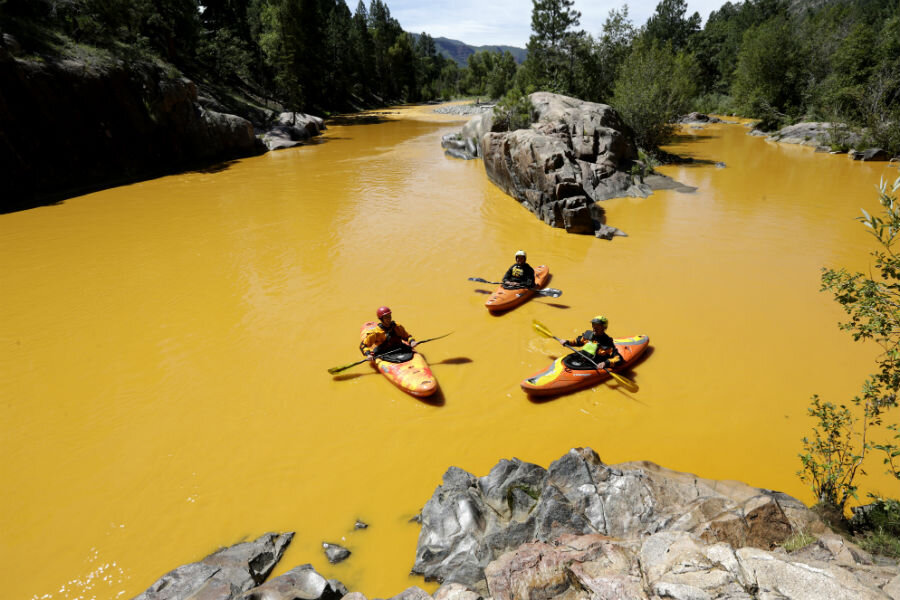Environmental workers spill one million gallons of waste into Colorado river
Loading...
A team working for the Environmental Protection Agency accidentally spilled one million gallons of acidic wastewater into a river while working on a waste-containment project at an abandoned mine north of Silverton, Colo., Wednesday.
The EPA’s team was working with heavy equipment to establish a safe way to enter Gold King Mine and access contaminated water, said Richard Mylott, a spokesman for the EPA in Denver in an interview with The Durango Herald. The project was intended to pump and treat the water and reduce metal pollution flowing out of the mine into Cement Creek, he said.
But that all went awry when a plug holding back the waste, which contains high levels of sediment and heavy metals, was accidentally released. The disaster dumped about one million gallons of acidic water, the EPA estimates, which flowed downstream as bright orange sludge through Cement Creek and into the Animas River, which is a tributary of the San Juan River, and popular among recreational boaters and fishermen.
La Plata County closed off the Animas River to the public for more than 70 miles, from San Juan County to New Mexico, and officials recommended that the water not be used for agricultural purposes until the water has been deemed safe. Officials in Utah are also monitoring the situation as the San Juan river's ultimate destination is Powell Lake, a reservoir along the border of Utah and Arizona.
"Colorado Parks and Wildlife biologists are monitoring the impacts to the fish and other wildlife in the Animas River,” Joe Lewendowski, Public Information Officer for Colorado Parks and Wildlife in Durango said.
The agency has placed cages with fish in the river to see how they react to the waters. Officials say they should know Friday whether there were any effects, according to The Denver Post.
San Juan County Emergency Manager Don Cooper emphasized that there is no cause for panic because the EPA has told the county that the spill will not harm humans, in an interview with a local newspaper, Daily Times. The primary pollutants are copper, iron, and zinc, according to officials.
"It's not going to look pretty, but it's not a killer," Mr. Cooper said.






